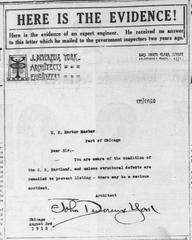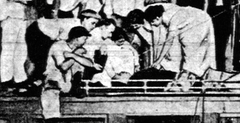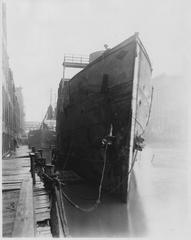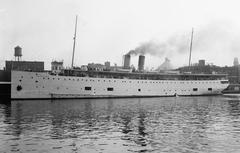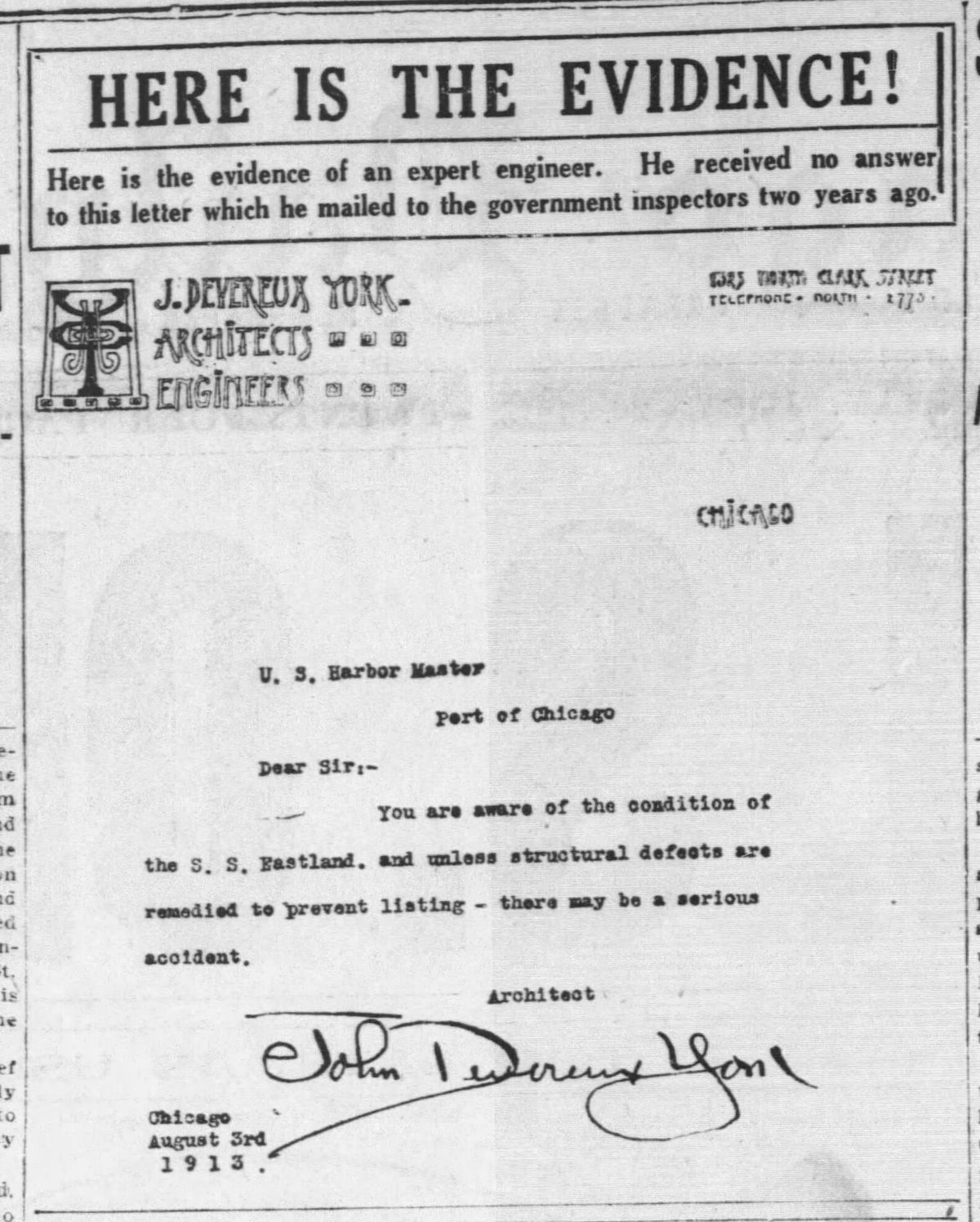
Visiting the SS Eastland Memorial in Chicago: Hours, Tickets, and Travel Tips
Date: 14/06/2025
Introduction
The SS Eastland Memorial in Chicago is a solemn tribute to one of America’s most devastating maritime disasters—the capsizing of the SS Eastland on July 24, 1915. This tragedy, which claimed 844 lives, mainly working-class immigrant families, unfolded rapidly on the Chicago River between LaSalle and Clark Streets. Although the disaster was overshadowed by other maritime tragedies in public memory, the Eastland’s story is preserved and honored through memorials, educational programs, and annual commemorations. This comprehensive guide covers the historical background, memorial locations, visiting information, and travel tips to ensure your visit is both respectful and enriching.
Learn more through organizations and resources such as the Eastland Disaster Historical Society, Britannica, and Lost in History.
Table of Contents
- Historical Background of the SS Eastland
- The Disaster of July 24, 1915
- Investigation and Legal Aftermath
- Impact on Maritime Safety Regulations
- The Memorials: Locations and Features
- Visiting Information: Hours, Accessibility, and Tickets
- Nearby Attractions and Experiences
- Cultural and Historical Significance
- FAQs
- Conclusion and Travel Tips
- References and Further Reading
Historical Background of the SS Eastland
The SS Eastland was constructed in 1903 by the Jenks Ship Building Company in Port Huron, Michigan, to serve as an excursion steamer on the Great Lakes. The vessel measured 265 feet and was originally designed for 650 passengers, later modified to carry over 2,500—a change that made her dangerously top-heavy (Britannica). The additional lifeboats and life vests, required after the Titanic disaster, ironically worsened the ship’s stability (Smithsonian Magazine).
Throughout her early career, the Eastland experienced several incidents of listing, which were minimized by inspectors and company officials. Despite concerns from crew and passengers, the vessel continued service with only minor modifications (CTEEC).
The Disaster of July 24, 1915
On July 24, 1915, the SS Eastland was chartered to ferry Western Electric Company employees and their families to a company picnic. Over 2,500 people boarded the ship, most of them working-class immigrants (Lost in History). At 7:28 a.m., while still moored between LaSalle and Clark Streets, the Eastland rolled onto her port side in the shallow Chicago River. The disaster unfolded in less than five minutes, trapping hundreds below deck and resulting in 844 deaths—more than the Titanic or Lusitania disasters (Wikipedia; History.com).
Rescue efforts began immediately, but the muddy waters and the ship’s position made recovery arduous. The city of Chicago was plunged into mourning as funerals stretched city resources and the tragedy’s scale became apparent (DNAinfo).
Investigation and Legal Aftermath
Public outrage after the disaster centered on the ship’s owners and regulatory authorities. Investigations revealed long-standing stability issues and ignored warnings. Legal proceedings, including the case United States vs. George T. Arnold et al., ultimately ended with the ship’s owners and crew cleared of major wrongdoing, largely due to legal maneuvering and the influence of notable defense attorney Clarence Darrow (National Archives; Posts in the Graveyard). The victims’ families received little justice or compensation.
Impact on Maritime Safety Regulations
The Eastland disaster prompted significant reforms in maritime safety. Federal authorities introduced stricter passenger vessel regulations, including improved ship stability standards, better crew training, and more rigorous inspections (CTEEC). The tragedy also contributed to the establishment of the U.S. Coast Guard’s oversight of inland waterways.
The Memorials: Locations and Features
Riverfront SS Eastland Memorial
- Location: Corner of Wacker Drive and LaSalle Street, south bank of the Chicago River (Atlas Obscura)
- Features: A polished granite plaque etched with the ship’s image and a brief description of the disaster. Modest and easily overlooked, the memorial blends into the urban landscape.
Bohemian National Cemetery Memorial
- Location: 5255 N. Pulaski Road, Chicago, IL
- Features: A more elaborate memorial with a salvaged steamship wheel, granite tributes, and images recounting the disaster. Many Eastland victims are buried here (Flower in the River).
Annual commemorations are held at both memorials, particularly on July 24, the disaster’s anniversary (ABC7 Chicago).
Visiting Information: Hours, Accessibility, and Tickets
- Riverfront Memorial: Open 24/7; no admission fee or tickets required. Wheelchair accessible via paved sidewalks (Great Lakes People and Places).
- Bohemian National Cemetery: Open daily, typically 8 a.m. to 5 p.m.; free admission. Some areas may have uneven ground, but the site is generally accessible.
Getting There:
- Public Transit: The riverfront memorial is near major CTA bus and train lines; the cemetery is accessible by car or public transit.
- Parking: Limited downtown; public transit is recommended for the riverfront site.
Guided Tours: The Eastland Disaster Historical Society occasionally offers guided walks and educational programs. Cemetery tours may be arranged in advance.
Nearby Attractions and Experiences
- Chicago Riverwalk: Scenic views, benches for reflection, and access to additional historical markers.
- Reid Murdoch Center: Historic building used as a temporary morgue after the disaster; located across the river from the memorial.
- Other Sites: Chicago Architecture Center, Michigan Avenue Bridge, Willis Tower, and the Chicago History Museum are all within walking distance.
Cultural and Historical Significance
The SS Eastland disaster is often called “Chicago’s Titanic” due to its scale and the tragic loss of working-class immigrant families (Atlas Obscura). For decades, the event was largely absent from mainstream history, but recent efforts by descendants and local historians have ensured its legacy endures. The understated riverfront plaque and the more contemplative cemetery memorial reflect ongoing debates about public memory and the importance of commemorating all communities affected by tragedy (History.com).
The disaster also inspired reforms in maritime safety and remains a powerful case study in corporate accountability, labor history, and community resilience (Lost in History).
FAQs
Q: Where is the SS Eastland Memorial located?
A: The main memorial is at the corner of Wacker Drive and LaSalle Street, on the south bank of the Chicago River. A larger commemorative site is at Bohemian National Cemetery.
Q: What are the visiting hours?
A: The riverfront memorial is open 24/7. The cemetery is open daily, generally 8 a.m. to 5 p.m.
Q: Is there an admission fee or need for tickets?
A: No, both sites are free to visit.
Q: Is the memorial accessible?
A: The riverfront site is wheelchair accessible; the cemetery is mostly accessible.
Q: Are guided tours available?
A: Occasional tours are organized by the Eastland Disaster Historical Society. Cemetery tours may be booked in advance.
Q: What attractions are nearby?
A: Chicago Riverwalk, Reid Murdoch Center, Chicago Architecture Center, and other major downtown sites.
Conclusion and Travel Tips
Visiting the SS Eastland Memorial is a powerful way to honor the memory of 844 lives lost and to reflect on issues of safety, justice, and community. For the fullest experience:
- Plan your visit around July 24 for commemorative events.
- Take time to explore both memorial sites for different perspectives.
- Combine your visit with other Chicago historical attractions.
- Use public transit for easy access to downtown sites.
- Consider guided tours or digital resources, such as the Audiala app, for deeper engagement.
By exploring the memorials and learning about the disaster, you contribute to preserving this essential chapter of American and Chicago history.
References and Further Reading
- Eastland Disaster Historical Society
- Lost in History: SS Eastland Disaster
- Atlas Obscura: SS Eastland Memorial
- Britannica: Eastland Disaster
- National Archives: Eastland Disaster
- History.com: Chicago’s Deadliest Day
- Smithsonian Magazine: Safety Impact
- ABC7 Chicago
- Flower in the River
- Great Lakes People and Places
- Posts in the Graveyard: Eastland Disaster
- Our Haunted Travels
- Prked Parking Guide: SS Eastland Memorial
- Wandering Educators
